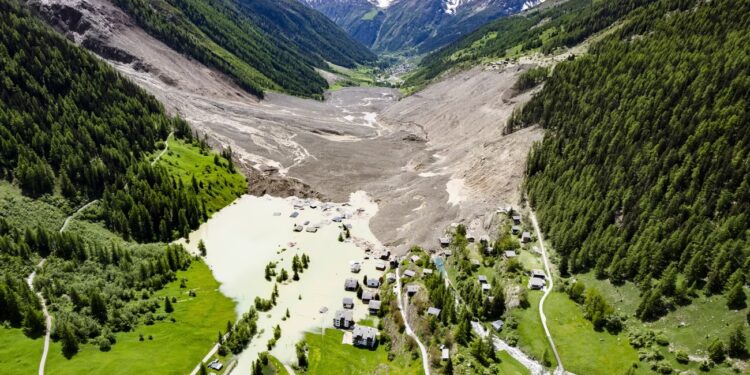The Swiss village of Blatten in the Lötschental valley was virtually erased last week after a catastrophic landslide triggered by the collapse of a glacier above the settlement. Authorities believe the disaster, which unfolded on 28 May, was driven by rapid glacial melting linked to climate change—a stark warning of the risks now facing Alpine communities.
Blatten, home to around 300 residents, was evacuated just days before the collapse, saving most lives. However, one man remains missing. The landslide, unleashed by the sudden release of ice, rock and earth from Birch Glacier, swept down with immense force, levelling homes, the local church and the historic Hotel Edelweiss. Roughly 90 percent of the village is now buried beneath an estimated 10 million cubic metres of debris.
Swiss geologists had issued early warnings in mid-May after large volumes of rock began falling from Kleines Nesthorn mountain onto the Birch Glacier. Warmer temperatures and thawing permafrost are believed to have destabilised the glacial structure, allowing the ice mass to surge before breaking loose. The seismic event registered as a magnitude 3.1 tremor, according to Swiss authorities.
Experts say the disaster offers a vivid demonstration of how climate change is transforming the stability of mountainous regions. Melting permafrost, once a natural glue holding alpine rock formations together, is rapidly disappearing as average temperatures in the Alps rise. This is increasing the frequency and intensity of landslides, icefalls and other geological hazards.
Glaciologist Mathieu Morlighem from Dartmouth College warned that similar incidents are likely to become more common. “As permafrost degrades, the structural integrity of entire mountain faces can fail without warning,” he said. In Blatten’s case, the steep terrain, loose rock layers, and sudden ice collapse created a perfect storm.
The aftermath has also altered the landscape in unexpected ways. The Lonza River was blocked by the landslide, forming a new lake that now threatens downstream areas with potential flooding. Emergency crews continue to monitor the situation, while the Swiss government has deployed experts to assess long-term risks across the Valais region.
Blatten’s fate is a devastating human tragedy—but also a reminder that climate instability is no longer a distant or abstract threat. It is changing the face of Europe’s highlands today, with consequences measured not only in lost landscapes, but in shattered communities.
newshub finance



Recent Comments